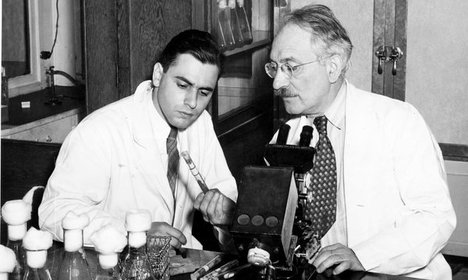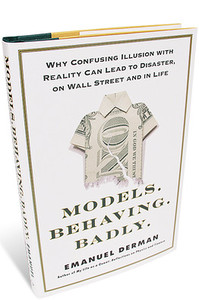Source of book image: http://www.namingandtreating.com/wp-content/uploads/2011/04/SuperCooperators_small.png
(p. 18) Nowak is one of the most exciting modelers working in the field of mathematical biology today. But a model, of course, is only as good as its assumptions, and biology is much messier than physics or chemistry. Nowak tells a joke about a man who approaches a shepherd and asks, ”If I tell you how many sheep you have, can I have one?” The shepherd agrees and is astonished when the stranger answers, ”Eighty-three.” As he turns to leave, the shepherd retorts: ”If I guess your profession, can I have the animal back?” The stranger agrees. ”You must be a mathematical biologist.” How did he know? ”Because you picked up my dog.”
. . .
Near the end of the book, Nowak describes Gustav Mahler’s efforts, in his grandiloquent Third Symphony, to create an all-encompassing structure in which ”nature in its totality may ring and resound,” adding, ”In my own way, I would like to think I have helped to give nature her voice too.” But there remains a telling gap between the precision of the models and the generality of the advice Nowak offers for turning us all into supercooperators. We humans really are infinitely more complex than falling apples, metastasizing colons, even ant colonies. Idealized accounts of the world often need to ignore the messiness of reality. Mahler understood this. In 1896 he invited Bruno Walter to Lake Attersee to glimpse the score of the Third. As they walked beneath the mountains, Walter admonished Mahler to look at the vista, to which he replied, ”No use staring up there — I’ve already composed it all away into my symphony!”
For the full review, see:
OREN HARMAN. “A Little Help from Your Friends.” The New York Times Book Review (Sun., April 10, 2011): 18.
(Note: ellipsis added.)
(Note: the online version of the review has the date April 8, 2011, and has the title “How Evolution Explains Altruism.”)
The full reference for the book under review, is:
Nowak, Martin A., and Roger Highfield. Supercooperators: Altruism, Evolution, and Why We Need Each Other to Succeed. New York: Free Press, 2011.








